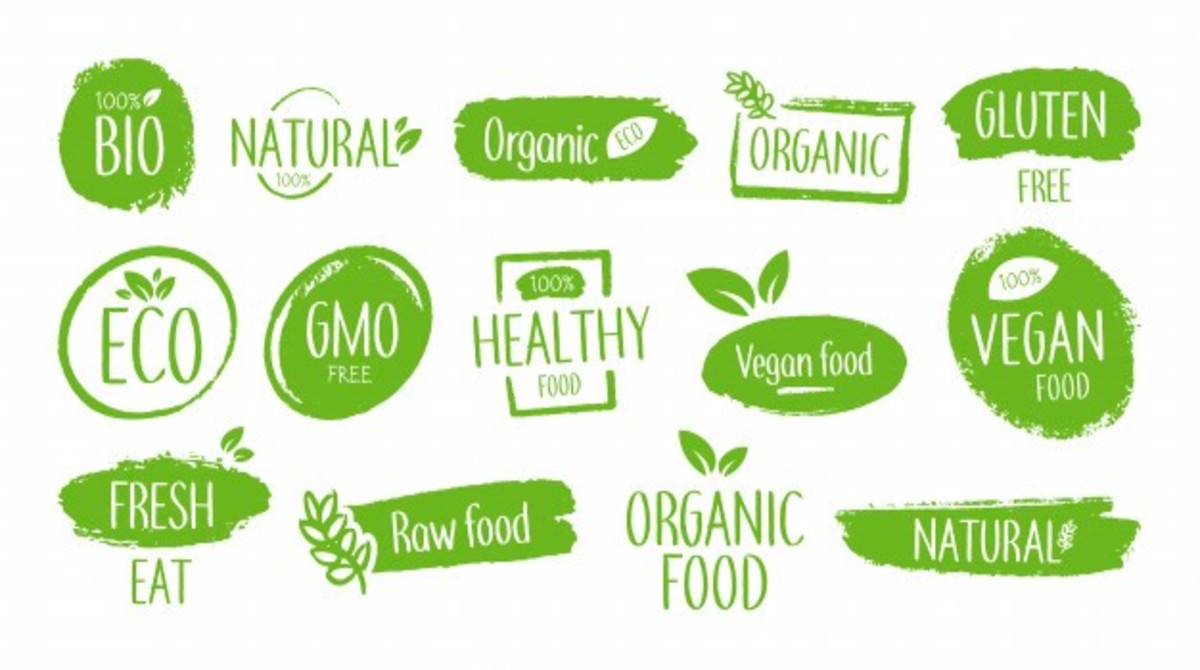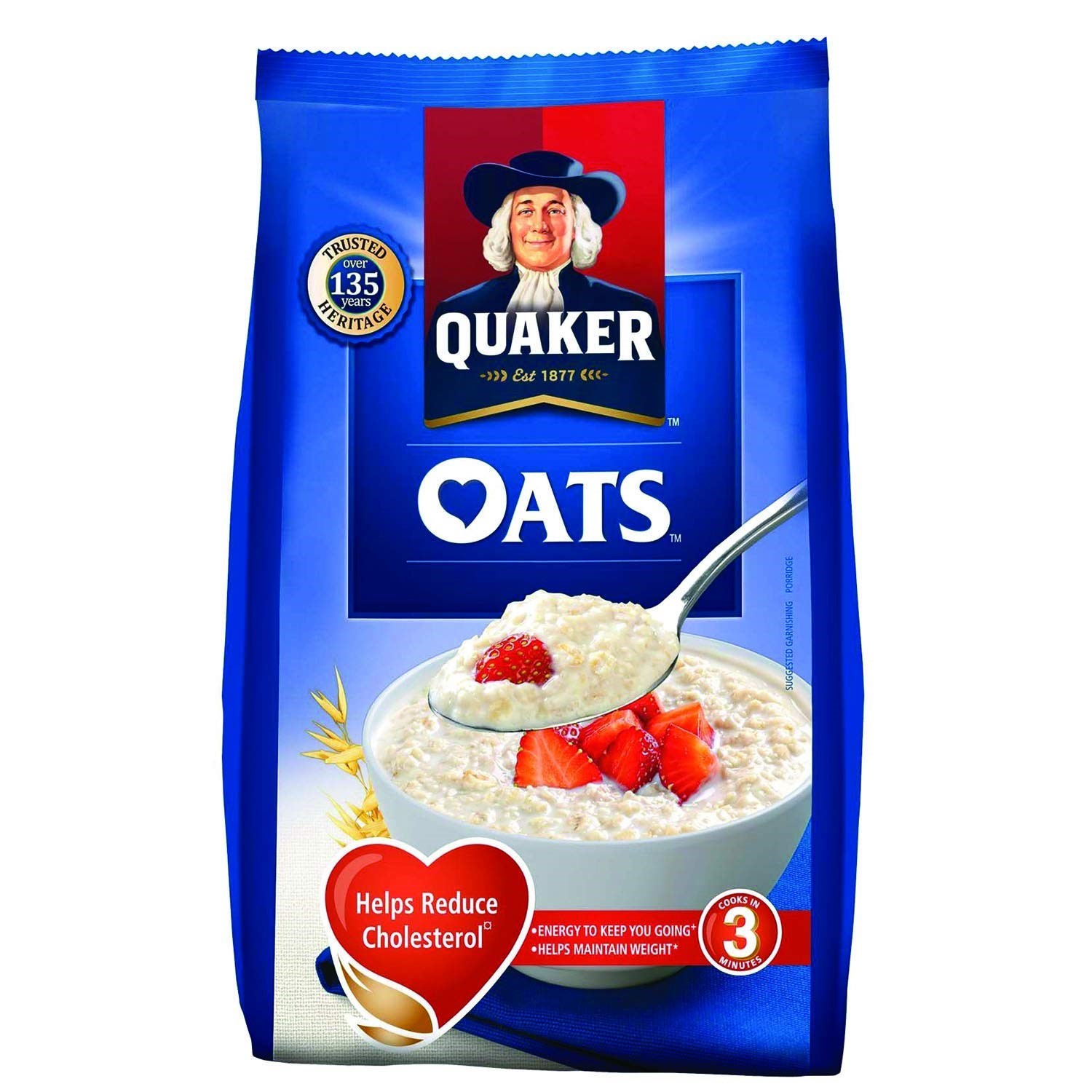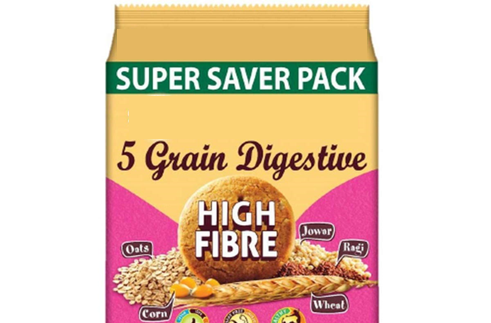Nutrition Claims and Health Claims are the same, right? WRONG!
July 19, 2022

Many people use the nutrition label to find out about the number of calories or nutrients found in a certain food. The nutrition label has plenty of information to assist you to make healthy choices at the grocery store. The nutrition label consists of the Nutrition Facts table, the ingredient list, health claims and nutrient content claims. Health claims and nutrient content claims are two tools found on food labels of pre-packaged foods that help you make healthy choices.
To understand more about food labels, visit Understand Everything About Food Labels in 9 Minutes
What are Claims?
A claim as defined by the Food Safety and Standards Authority of India (FSSAI) means, “any representation which is printed, oral, audio or visual and states, suggests, or implies that a food has particular qualities relating to its origin, nutritional properties, nature, processing, composition or otherwise.” Manufacturers thrive on such claims on food labels that garner them a good product status and high sales in the market.
FSSAI has stated some general principles for Claims to be declared on a food label:
All Claims must be truthful and should not mislead the consumer.
No Claim should encourage or condone the excess consumption of a particular food.
No Claim shall state that a balanced diet cannot provide nutritional benefits.
Claims should indicate clearly the serving sizes for the claimed benefit.
All claims stating nutritional or health benefits should be scientifically substantiated.
Claims declared on advertisements should be similar to those on the label.
If the trademark contains words such as “natural”, “fresh”, “pure”, “original”, “traditional”, “authentic”, “genuine”, “real”, etc., appearing in the labelling then a disclaimer should be declared, "*This is only a brand name or trademark and does not represent its true nature”.
Types of Claims
There are various claims that food manufacturers can make depending on the composition of their products. The various claims allowed on a food label are nutrition claims, health claims, non-addition claims, claims related to dietary guidelines or healthy diets and conditional claims.
The two broad types of Claims are:
1. Health Claims
2. Nutrition Claims
What are Health Claims?
A health claim is a statement about food and what it could do for your health when eaten as part of a healthy diet. The Codex Alimentarius Commission in its ‘Guidelines for Use of Nutrition and Health Claims’ has defined a Health claim as “any representation that states, suggests, or implies that a relationship exists between a food or a constituent of that food and health.” In other words, Health claims describe a relationship between a food substance (a food, food component, or dietary supplement ingredient), and reduced risk of a disease or health-related condition. Choosing foods with health claims may assist you to lower your risk of these diseases when used as part of an overall healthy and well-balanced diet.
For example – plant sterols help lower cholesterol, a healthy diet rich in fruits and vegetables may help reduce the risk of some type of cancer, etc. are all health claims.
Health claims available to be used are either considered “authorized” or “qualified.”
“Authorized” health claims have a significant scientific agreement (SSA), meaning there is a consensus within the publicly available scientific information on the matter. An example of an authorized health claim would be, “Adequate dietary calcium and vitamin D may reduce the risk of osteoporosis in later life.”
“Qualified” health claims, on the other hand, don’t have the requirements for SSA but are validated by a significant amount of scientific evidence. When using “qualified” health claims, you must include a disclaimer or qualifier that makes the amount of scientific evidence clear so as not to mislead consumers. An example of a qualified health claim is, “Some scientific evidence supports, but does not prove, that eating X servings of whole grains per day may reduce the risk of Type 2 diabetes.”
All foods with health claims must meet certain criteria set by the governing bodies. This ensures that all health claims are true and accurate.
Components of Health Claims
A Health Claim usually consists of two parts
Statement on the healthy relationship that is the physiological role of the nutrient/ substance/ diet.
And information on the composition of the product relevant to the physiological role of the nutrient/ substance/ diet.
Apart from this, if a health claim is made for which the Recommended Dietary Allowance value is present then, the claim should have statements like a source of/ high in the constituent or low/ reduced/ free of the constituent. It should also have a statement declaring the quantity of the nutrient per 100g/ml for which the claim is made and wherever possible the target group should be mentioned as well.
An example of a health claim is- ‘This product is low in sodium (0.12g sodium/100g) and hence may help in reducing the risk of high blood pressure.’
All Health Claims should also mention the target audience as well as directions for use along with the maximum safe intake levels.

Types of Health Claims allowed on a Food Label
Health Claims are divided into three types
Nutrient Function Claims- describing the role of the nutrient in the functioning of the body. For example, 'thiamine contributes to the normal function of the heart'.
Other Function Claims- describing beneficial effects of food or constituent in normal body functioning or bringing a positive contribution to health. For example, ‘Probiotics help support your immune system’.
Reduction of Disease Risk Claims- describing the benefit of eating the food or constituent to reduce the risk of certain diseases. For example, ‘Barley beta-glucans have been shown to lower blood cholesterol. High cholesterol is a risk factor in the development of coronary heart disease’.
Nutrient- health relationship for which health claims are allowed on a food label as per FSSAI is given in the table below:
Nutrient | Claim |
High Calcium / Calcium and Vitamin D | Reduces risk of Osteoporosis |
Low Sodium | Reduces risk of High Blood pressure |
High Potassium | |
Low Saturated Fat | Maintenance of Blood Cholesterol |
High Alpha-Linolenic Acid | |
High Dietary Fibre/ Phytosterol or stanol | Maintenance of normal lipid profile. |
High Beta Glucans | Reduces rise of Blood glucose |
FSSAI has also given guidelines for health claims allowed on a food label to be used for fortified foods and includes claims on Vitamins and Mineral content.
Nutrient | Claim |
Vitamin A | Vitamin A helps against night blindness. |
Iron | Iron fights Anemia. |
Vitamin B12 | Vitamin B12 is important for maintaining normal functioning of Nervous system and blood formation. |
Folate and Folic acid | Folate & Folic acid is important for foetal development and blood formation. |
Apart from these, claims such as Natural, Fresh, Pure, Authentic, Genuine, Real, Traditional, and Original cannot be used on a food label except under certain specific conditions listed by FSSAI.
Example: ‘Natural’ can be used on a food label for
only single-ingredient product, derived from sources like plants, animals, microbes, and minerals and to which nothing is added and it is subjected to only such processing that is suitable for human consumption.
Permitted food additives are only obtained from natural sources using appropriate physical processing.
Composite foods cannot be claimed as “natural” but such foods may be described as “made from natural ingredients” only if all the ingredients or food additives meet the above-mentioned criteria.

What are Nutrition Claims?
A Nutrition Claim is different from a health claim. Nutrition Claims represent that a food has particular nutritional properties. Consumers can choose products with nutrition claims over ordinary products to gain the benefit. For example – Fat-free, low in sodium, sugar-free, etc. are all nutrition claims.
Nutrition Claims do not mean the mere mention of substances in the list of ingredients or declaration of nutrients as a part of nutrition labelling.
Types of Nutrition Claims
1. Nutrient Content Claim
It is a statement about the amount of a nutrient found in food. Nutrient content claims to help you to consume more or less of a particular nutrient. They must be true and accurate just like health claims. Choosing foods with nutrient content claims will help you get more of certain nutrients like calcium and fibre and less of other nutrients like sodium and sugar.
Basically, it describes the extent of a nutrient within the product, using terms such as free, high, and low.
2. Nutrient Comparative Claim
A nutrient comparative claim is a claim statement under nutrition claims that compares the nutrient levels or energy value of two or more foods. Examples: reduced; less than; fewer; increased; more than, etc. It basically compares the level of a nutrient in a food to that of another food, using terms like more, reduced, and lite. This claim should compare foods that are different versions of the same foods or similar foods. The relative difference of the claimed parameter between two foods should be at least:
25% in energy or nutrient content value.
10% of RDA for micronutrients, except sodium.
In addition, the nutrient comparative claim should declare the identity of foods compared and differences in percentages clearly on the food label. Example: 40% less fat than regular potato chips.
Health claims and nutrition claims should be used in combination with the Nutrition Facts Table and ingredient list. They are additional tools to make it easier to settle on healthy foods at the grocery store.
Misleading Claims
A food manufacturer has to strictly follow the regulations as stated by FSSAI and make responsible health claims or nutrition claims that do not mislead the consumer but give meaningful information. However, many manufacturers misuse the trust of consumers and get away from the regulators by stating misleading and inaccurate claims. Claims such as that food help to increase immunity or is healthy without full proof substantiation are all dubious and should not be trusted. Policy makers should play a key role in identifying these loopholes and strife to serve the everyday consumer by implementing strict policies. Manufacturers on their part should avoid stating false claims and be non-ambiguous in their claims. Lastly, consumers should be smart by asking the right questions and be informed about these wrong practices, so that they can make the right product selection.
How to identify whether a food product is high or low in a particular nutrient?
In order to know whether a food product qualifies for a nutrition claim, FSSAI had given cut-offs and limits for nutrition claims for all nutrients to be used on a food label.
The table below mentions examples of the same:
Nutrient Claim | Condition |
Source of Protein | 10% or 5% of RDA per 100g/ml of solids & liquids respectively. |
High Protein | 20% or 10% of RDA per 100 g/ml of solids & liquids respectively. |
Low Sodium | The product contains not more than 0.12g of sodium per 100g/ml. |
Very Low Sodium | The product contains not more than 0.04g of sodium per 100g/ml. |
Sodium Free | The product contains not more than 0.005g of sodium per 100g/ml. |
REFERENCES
Unlock Food (2019). Decoding the Nutrition Label – Health claims and Nutrient content claims. Retrieved from
Food Safety and Standards Authority of India (FSSAI). Food Safety and Standards (Advertising and Claims) Regulations, 2018. Retrieved from FSSAI.
Codex Alimentarius Commission. Guidelines for Use of Nutrition and Health Claims. CAC/GL 23-1997. Retrieved from Guidelines | CODEXALIMENTARIUS FAO-WHO.
U.S. Food and Drug Administration. Food Labelling and Nutrition. Label claims for conventional foods and dietary supplements. Retrieved from
LabelCalc (2018). Nutrient content claim v/s Health claim: what’s the difference? Retrieved from

Olivia Crasto (MSc in Food Processing & Preservation)
Olivia is a Learner for Life, Eco enthusiast and loves to experience nature and its beauty
